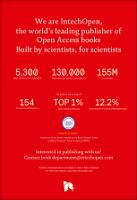Chapter Energy-Aware Software Engineering
Author(s)
Eder, Kerstin
Gallagher, John P.
Language
EnglishAbstract
Polystyrene (PS) is a petroleum‐based plastic made from styrene (vinyl benzene) monomer. Since it was first commercially produced in 1930, it has been used for a wide range of commercial, packaging and building purposes. In 2012, approximately 32.7 million tonnes of styrene were produced globally, and polystyrene is now a ubiquitous household item worldwide. In 1986, the US Environmental Protection Agency (EPA) announced that the polystyrene manufacturing process was the fifth largest source of hazardous waste. Styrene has been linked to adverse health effects in humans, and in 2014, it was listed as a possible carcinogen. Yet, despite mounting evidence and public concern regarding the toxicity of styrene, the product of the polymerisation of styrene, PS, is not considered hazardous. This chapter draws on a series of movements called the ‘new materialisms’ to attend to the relational, unstable and contingent nature of PS, monomers and other additives in diverse environments, and thus, we highlight the complexities involved in the categorisation of PS as ‘hazardous’ and the futility of demarcating PS as ‘household waste'. While local examples are drawn from the New Zealand context, the key messages are transferrable to most policy contexts and diverse geographical locations.
Keywords
polystyrene, styrene, hazardous waste, New Zealand, materiality, carcinogen, new materialismDOI
10.5772/65985Publisher
InTechOpenPublisher website
https://www.intechopen.com/Publication date and place
2017Classification
Environmental monitoring


 Download
Download